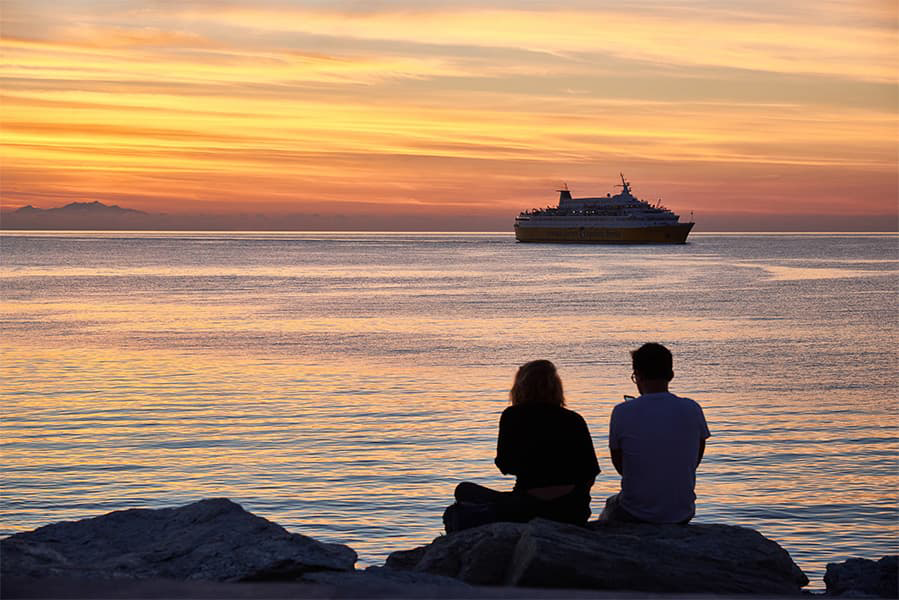Rinella - Vulcano
Ferries to Aeolian Islands
Rinella - Vulcano
Ferries to Aeolian Islands

The Rinella Vulcano ferry route connects Aeolian Islands with Aeolian Islands and is currently operated by 2 ferry companies. The Liberty Lines Fast Ferries service runs up to 12 times per day with a sailing duration of around 1 hour While the Siremar service runs up to 15 times per week with a duration from 2 hours.
So that’s a combined 15 sailings on offer per day on the Rinella Vulcano route between Aeolian Islands and Aeolian Islands. Compare now and get the best fare at the time that you want to travel.
More routes than anyone else.

Compare fares, times & routes in one place.
Change plans easily with flexi tickets.

Book e-tickets & manage trips in-app.
Live ship tracking & real-time updates.

Top-rated customer support when you need it.
Rinella is a village in the municipality of Leni, on the Aeolian Island of Salina. The village is basically a tiny hamlet on the coast towards the south of Leni. Rinella is Salina’s second port after Santa Marina on the eastern coast. The port is served by regular hydrofoils and ferry services to and from Lipari, Messina, Alicudi, Filicudi, Milazzo, Palermo, Panarea, Stromboli and Vulcano. The history of Rinella dates back to as far as 5000 BC. Nowadays, the port is actually also a busy tourist hub especially in the summer months. At the port you will see some pastel coloured houses huddling around the waterfront. Unlike most pebbled beaches in Salina, Rinella offers a sandy beach just by the village centre.
The volcanic island of Vulcano is the southernmost of the Aeolian Islands group and is located about 25 km north of Sicily. Vulcano last erupted in the late 19th century. It is possible to walk to the edge of the crater and look in but the sulphurous smell may put you off from hanging around too long. All the beaches are comprised of soft, black sand and there are hot springs that keep the sea bubbling. For the brave there are hot mud pools which are said to contain healing properties.